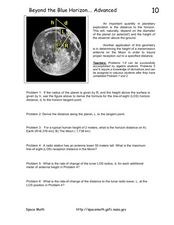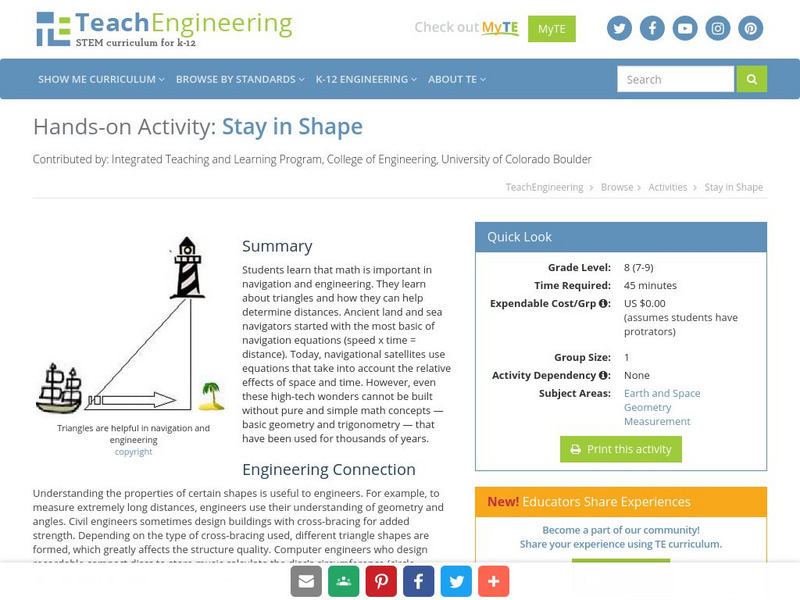Curated OER
Modeling a Planetary Nebula
In this modeling a planetary nebula worksheet, students use a diagram to calculate the intensity at different radii from the center of the nebula. Students use the Pythagorean Theorem to determine the distance between two points on the...
Teach Engineering
Catching the Perfect SAR Waves!
Zero in on an interesting resource involving radar technology. Groups construct a radar sensing unit and learn to calibrate the system. Using the radar system and the Pythagorean Theorem, they calculate distances between objects.
Curated OER
An application of the Parallax Effect
In this parallax effect worksheet, students observe 2 photographs taken of an active area of the sun by 2 STEREO satellites and 1 photograph taken of the same active area of the sun by the SOHO satellite. Students observe the shift in...
Curated OER
Navigating by the Numbers
Students observe how math is important in navigation and engineering. They study how surveyors use math and science to calcute, count, measure, label, and indicate distances on a map. They estimate specific distances.
Curated OER
Beyond the Blue Horizon...Advanced
In this calculating the horizon worksheet, students solve 6 problems using algebra, derivatives and calculus to find the formula for the line-of-sight horizon, the distance along a planet, the horizon distance and the rates of change for...
Curated OER
The Math of Science-Squares and Square Roots
In this squares and square roots worksheet, students practice finding the squares of numbers and the square roots of numbers given word problems.
TeachEngineering
Teach Engineering: Stay in Shape
In this activity, students will learn that math is important in navigation and engineering. Ancient land and sea navigators started with the most basic of navigation equations (Speed x Time = Distance). Today, navigational satellites use...






